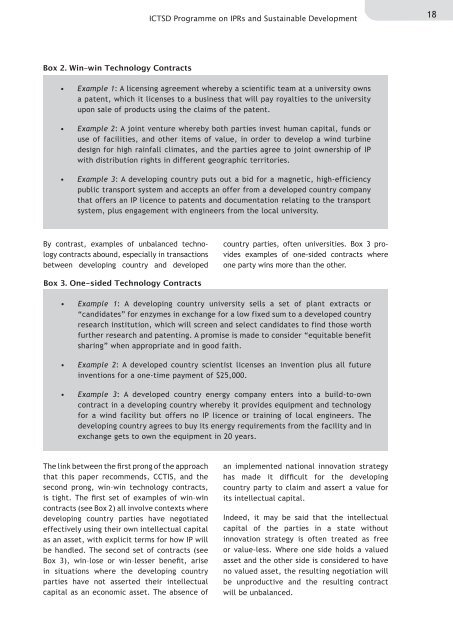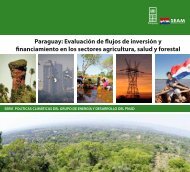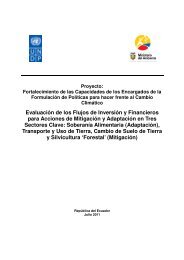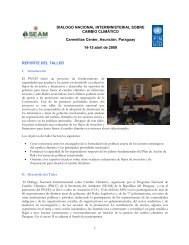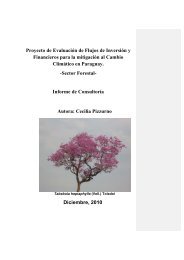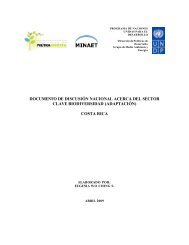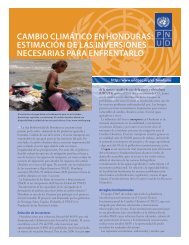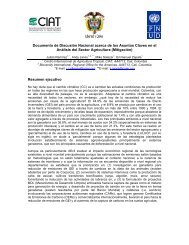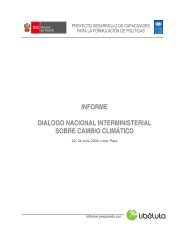View Publication - UNDPCC.org
View Publication - UNDPCC.org
View Publication - UNDPCC.org
Create successful ePaper yourself
Turn your PDF publications into a flip-book with our unique Google optimized e-Paper software.
ICTSD Programme on IPRs and Sustainable Development<br />
18<br />
Box 2. Win–win Technology Contracts<br />
• Example 1: A licensing agreement whereby a scientific team at a university owns<br />
a patent, which it licenses to a business that will pay royalties to the university<br />
upon sale of products using the claims of the patent.<br />
• Example 2: A joint venture whereby both parties invest human capital, funds or<br />
use of facilities, and other items of value, in order to develop a wind turbine<br />
design for high rainfall climates, and the parties agree to joint ownership of IP<br />
with distribution rights in different geographic territories.<br />
• Example 3: A developing country puts out a bid for a magnetic, high-efficiency<br />
public transport system and accepts an offer from a developed country company<br />
that offers an IP licence to patents and documentation relating to the transport<br />
system, plus engagement with engineers from the local university.<br />
By contrast, examples of unbalanced technology<br />
contracts abound, especially in transactions<br />
between developing country and developed<br />
country parties, often universities. Box 3 provides<br />
examples of one-sided contracts where<br />
one party wins more than the other.<br />
Box 3. One-sided Technology Contracts<br />
• Example 1: A developing country university sells a set of plant extracts or<br />
“candidates” for enzymes in exchange for a low fixed sum to a developed country<br />
research institution, which will screen and select candidates to find those worth<br />
further research and patenting. A promise is made to consider “equitable benefit<br />
sharing” when appropriate and in good faith.<br />
• Example 2: A developed country scientist licenses an invention plus all future<br />
inventions for a one-time payment of $25,000.<br />
• Example 3: A developed country energy company enters into a build-to-own<br />
contract in a developing country whereby it provides equipment and technology<br />
for a wind facility but offers no IP licence or training of local engineers. The<br />
developing country agrees to buy its energy requirements from the facility and in<br />
exchange gets to own the equipment in 20 years.<br />
The link between the first prong of the approach<br />
that this paper recommends, CCTIS, and the<br />
second prong, win–win technology contracts,<br />
is tight. The first set of examples of win–win<br />
contracts (see Box 2) all involve contexts where<br />
developing country parties have negotiated<br />
effectively using their own intellectual capital<br />
as an asset, with explicit terms for how IP will<br />
be handled. The second set of contracts (see<br />
Box 3), win–lose or win–lesser benefit, arise<br />
in situations where the developing country<br />
parties have not asserted their intellectual<br />
capital as an economic asset. The absence of<br />
an implemented national innovation strategy<br />
has made it difficult for the developing<br />
country party to claim and assert a value for<br />
its intellectual capital.<br />
Indeed, it may be said that the intellectual<br />
capital of the parties in a state without<br />
innovation strategy is often treated as free<br />
or value-less. Where one side holds a valued<br />
asset and the other side is considered to have<br />
no valued asset, the resulting negotiation will<br />
be unproductive and the resulting contract<br />
will be unbalanced.


